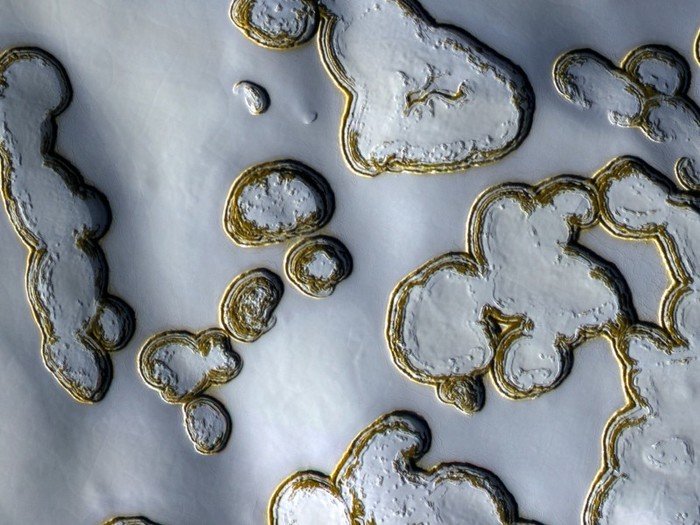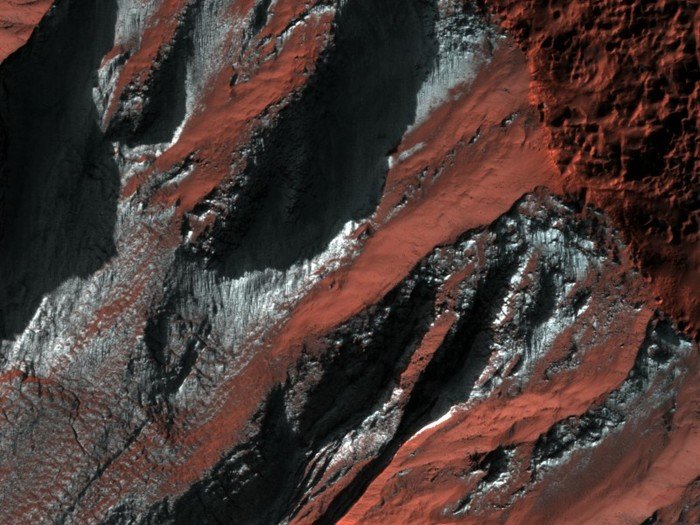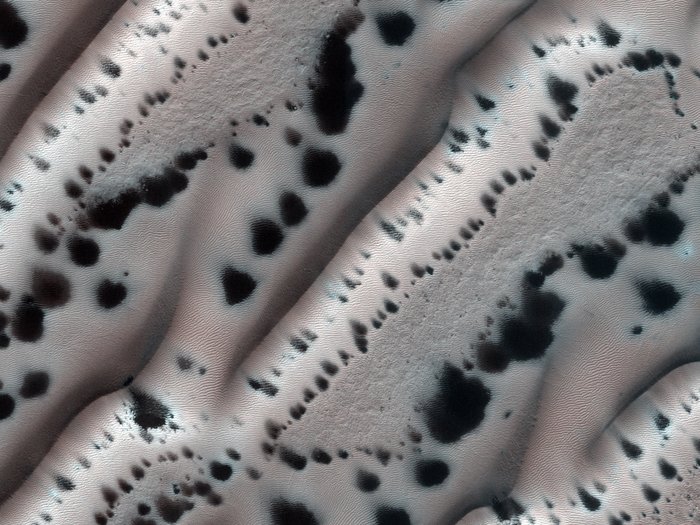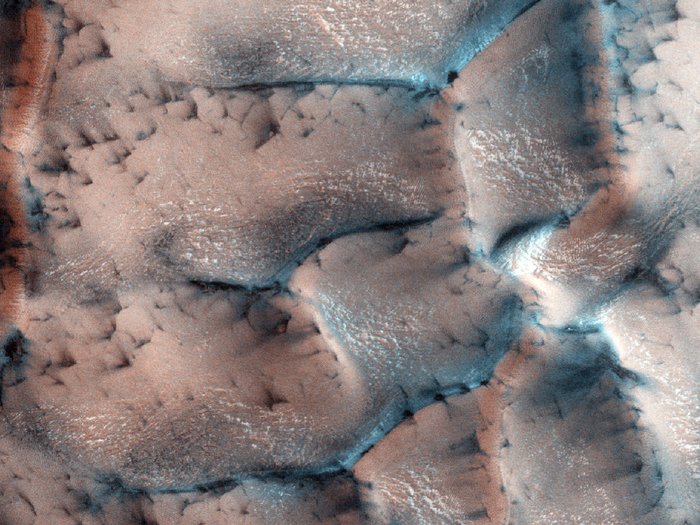Source - https://mars.nasa.gov/mro/multimedia/images/
It's not exactly ice - it's frozen carbon dioxide at minus 150 degrees Celsius.
The pictures are taken with the HiRISE camera installed on the MRO.
The smallest of the pits, in the center, the size of the stadium. This is the South Pole of Mars.

Long strips, piercing the walls of this crater, are ravines. In the Martian winter, snow can accumulate in ravines, especially on cold slopes that face the pole.

Winter ravines
Long strips in the lower left corner of this image are typical for ravines that form in autumn and winter, when carbon dioxide is deposited on the surface. Repeated observations of areas with these ravines allow scientists to investigate why ravines form and how they form the surface of Mars.

Pine tree farm on Mars?
Triangular spots that look like pine tree lines are only complex patterns created when winter turns into spring, and carbon dioxide begins to evaporate and expose the ground beneath it.

The ice dunes crack, during the spring temperatures and allow the sand to inflate the fan-shaped deposits on the ice. When ice breaks on the crest of a dune, sand sometimes slips down, leaving dark marks on dune walls.

Hi, I found some acronyms/abbreviations in this post. This is how they expand:
There is an typing error in the first line: it is not frozen carbon, it is frozen carbon dioxide. It is correct further down in the article
thx. post updated)